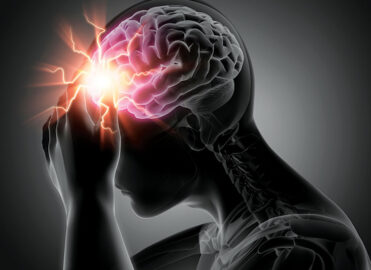How the Brain Fails to Turn Off Chronic Pain: New Research Offers Hope for Treatment
A new study has uncovered how the brain’s natural system for managing pain breaks down in chronic conditions—potentially explaining why some pain heals while other pain persists for months or even years.
The research, conducted by scientists at The Hebrew University of Jerusalem and published in Science Advances, reveals that the brain uses a kind of internal “braking system” to dampen pain signals during short-term (acute) pain. But when pain becomes chronic, this mechanism malfunctions, causing neurons to continue firing pain signals without pause.
Acute vs. Chronic Pain: The Brain Responds Differently
Led by doctoral student Ben Title and Professor Alexander M. Binshtok at The Hebrew University-Hadassah School of Medicine and the Edmond and Lily Safra Center for Brain Sciences, the study focused on a specific area in the brainstem known as the medullary dorsal horn. This region acts as a pain-processing hub, where certain projection neurons transmit pain signals from the body to higher brain centers.
During cases of acute inflammation, the researchers found that these neurons reduce their own activity, effectively controlling how many pain signals are passed along. Once the inflammation subsides, the neurons return to normal function.
In chronic pain, however, this self-regulating process fails. Instead of calming down, the neurons become increasingly excitable, sending amplified signals to the brain. This hyperactivity is believed to be one of the key drivers of chronic pain.
A-type Potassium Current: A Hidden Switch
A critical part of this regulatory system is the A-type potassium current (IA)—a specific electrical current that controls how easily neurons fire. Using a mix of electrophysiological recordings and computational models, the team discovered that this current plays a sedative-like role during acute pain by stabilizing neuronal activity.
But in chronic pain, this current does not increase as expected. Without it, the neurons lack inhibition and remain in an overstimulated state. This missing “brake” may be the biological switch that transforms temporary pain into chronic pain.
Unlocking New Paths to Pain Relief
“This is the first time we’ve been able to clearly observe how the same neurons behave so differently in acute versus chronic pain states,” said Professor Binshtok. “The absence of the brain’s natural calming signal in chronic pain opens a new window for therapeutic intervention.”
The findings offer new hope for the development of treatments that restore or replicate this natural pain-dampening mechanism. Instead of just masking pain, future therapies could prevent the brain from falling into a chronic pain loop in the first place.
A Step Toward More Effective Chronic Pain Management
With over 50 million Americans suffering from chronic pain—and many more worldwide—there’s a growing need for smarter, more targeted treatments. This research brings scientists closer to understanding how the nervous system’s internal controls fail, and how they might be reactivated.
By pinpointing how and why the brain allows pain to linger, this study could lead to a paradigm shift in how chronic pain is treated—potentially improving the lives of millions who currently suffer in silence.








